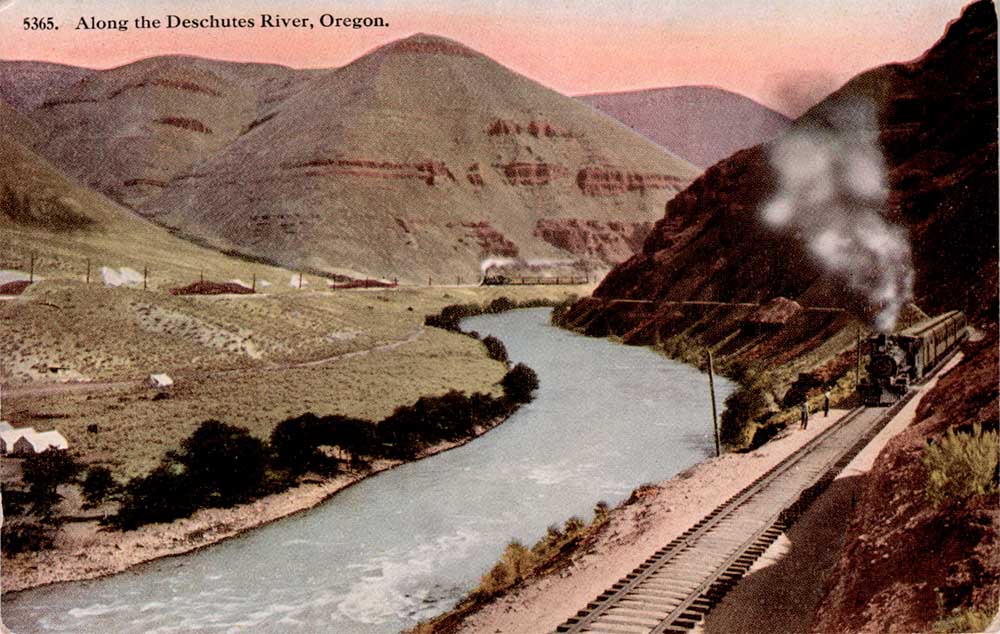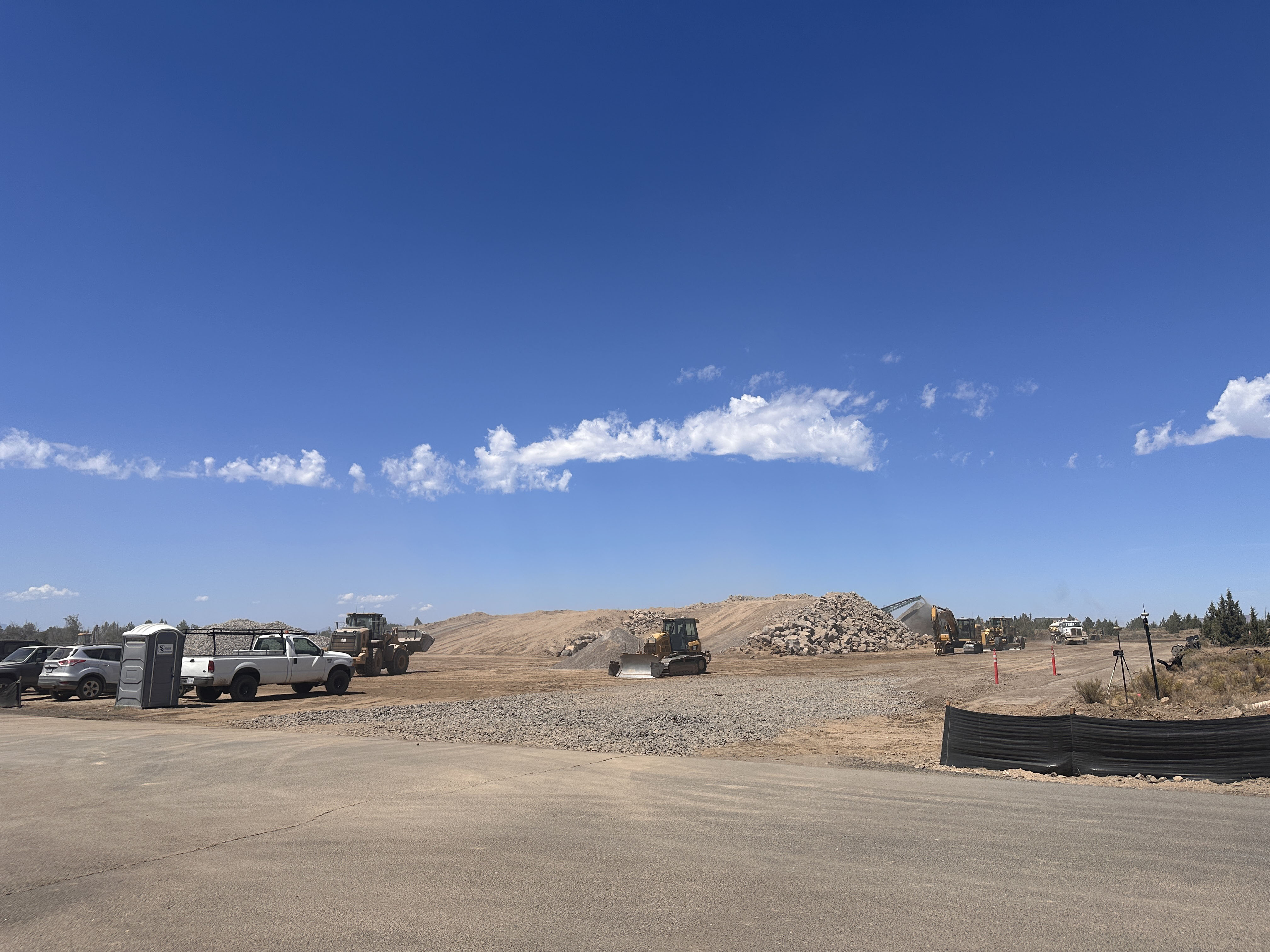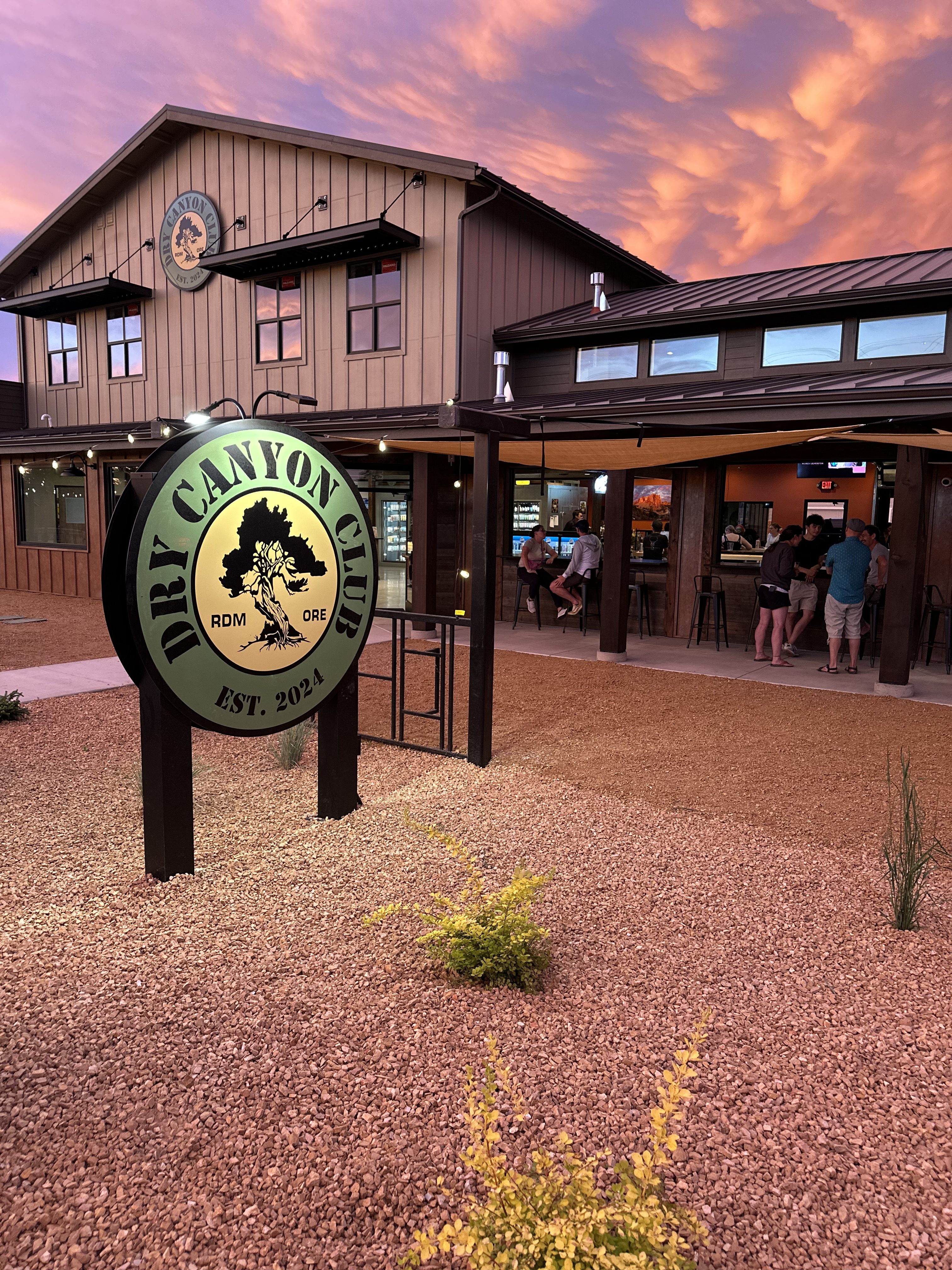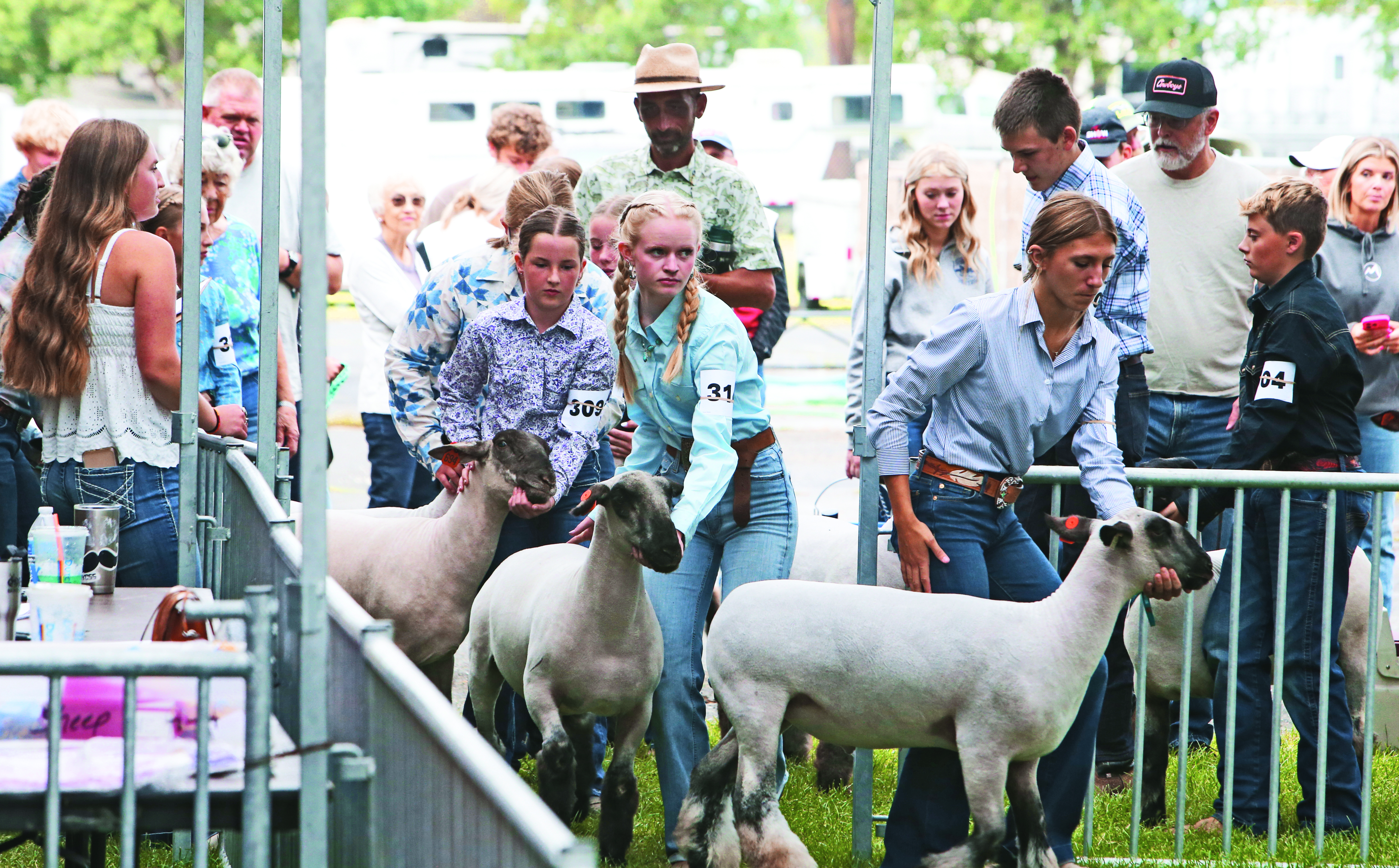Offbeat Oregon Part 2: The race to build a railroad along the Deschutes
Published 2:00 am Tuesday, November 28, 2023

- The Oregon Trunk railroad tracks near the mouth of the Deschutes River, with the Des Chutes Railroad tracks visible and still in use on the other side, circa 1911.
Editor’s note: This is the second of a multi-part installment on the race to build rail lines along the Deschutes River.
Trending
Johnson Porter’s first question after Jim Morrell introduced himself was straight and to the point:
“Do you know how to skin a bubble?” he asked.
The question was a reference to a popular song that had recently come out: “In My Merry Oldsmobile,” a waltz written by Gus Edwards and Vincent P. Bryan in 1905. It had gotten very popular first as sheet music and later on shellac phonograph records, and had created something of a sensation. The chorus of the song goes, in part, “Come away with me Lucille/In my merry Oldsmobile/Down the road of life we’ll fly/Automo-bubbling, you and I.”
Trending
A “mule skinner” was popular slang for a driver of mule teams. Accordingly, a “bubble skinner” was a driver of “automo-bubbles.”
The Porter brothers had bought one of the contraptions in hopes that it would enable them to skip around the country quickly, negotiating land sales and rights-of-way and running other errands along the route. They’d taken delivery of a 1908 Studebaker-Garford touring car, a great big specimen with space for four passengers plus the driver, powered by an enormous four-cylinder engine.
But nobody on their crews knew how to “skin” it.
Luckily for the Porters and for young Mr. Morrell, he did. So they hired him on the spot.
As you can imagine, “automo-bubbling” was a much more arduous job in 1909 than it is today, especially in a monster like that one. That flathead engine — which, although it was rated at less than 40 horsepower, was about the size of what you’d find in a modern Ford F-350 — had to be started with a hand crank. It was a tough enough job that the crank regularly got bent and had to be straightened with a blacksmith’s hammer, and famously, would break the driver’s arm if he didn’t do it just right.
The spark timing had to be advanced to just the right spot, the mixture had to be managed on the go by the driver, and the throttle was hand-operated like on an old farm tractor. All these inputs had to be juggled in real time while managing the clutch and brake and steering the car.
The car had no electrical system. The headlights were carbide lamps and the ignition used a magneto, which was prone to conking out if it got even slightly damp. It was also fairly top-heavy, so tipping it over was a constant hazard. It had brakes, but only on the back axle, and they were very weak. Morrell had to mostly use engine compression to slow the car on steep grades, like heavy truck drivers do today when descending long highway grades like Cabbage Hill on Interstate 84 between La Grande and Pendleton.
When Morrell first set out along the rutted and rocky wagon roads along the railroad right-of-way, the Porter brothers stood on the running boards, ready to jump off if it should look like Morrell was about to crash. They soon got comfortable, though, as he demonstrated his skill with the machine.
The Porter Boys were working for the Hill railroad, so their crews were racing to lay their tracks down on one side of the Deschutes River while Harriman railroad’s contractors, the Twohy Brothers, raced up the other. There was not much love lost between the two sets of crews. They fought pitched battles with each other with fists and sometimes pick handles when they got the chance.
Harriman and Hill had been business rivals for decades, but in their later years the rivalry devolved into a real bitter personal feud. It mostly stemmed from an incident in 1901 when Harriman basically tried to pull off a hostile takeover of Hill’s railroad while Hill’s biggest financial backer, J. Pierpoint Morgan, was away on vacation. He nearly succeeded, partially crashing the stock market in the process. After that, the two men cordially hated each other.
Most locals were rooting for Hill. Harriman had earned a reputation in Oregon for doing as little as possible in terms of railroad building. There wasn’t much in the way of business in Oregon beyond timber and agriculture, so once Portland and the Willamette Valley had been taken care of, Harriman had always found other locations more worthwhile to invest in.
What he did do, though, several times, was keep a close eye on any small railroad projects that looked like they might develop into real competition, and scare them off by announcing with great fanfare that the mighty Union Pacific (or Southern Pacific, which he also owned) was about to go into direct competition with them.
This happened in 1902 with a planned rail connection to Coos Bay, when Harriman went so far as to start construction — including a tunnel near Elkton — before abandoning the project the minute the competition gave up. It had sort of happened in the Deschutes River line, too — Harriman had formed his company, the Des Chutes Railroad, three years before, and announced grand plans to start construction any day. But then nothing had happened until Hill started building his line.
When that happened, Harriman sent his usual contractors, the Twohy Brothers, to start the job. Hill, who had incorporated his line as the Oregon Trunk, contracted with the Porter Brothers. The rival gangs of men, working sometimes within sight of each other, did everything they could to slow one another down.
There were incidents of men taking pot-shots at the “enemy camp,” not trying to hit anyone but just to make them nervous. If a blasting project could be arranged to throw rocks across the river at the other side’s camp and gear, it would be. (There was a lot of blasting done on both lines, and some of it was truly spectacular. The crews would dig “coyote holes” in the rock, big enough for a man to crawl inside, and fill them all the way to the top with blasting powder.) Both crews also snuck around at night trying to stampede one another’s herds of cattle and blow up their reserves of blasting powder — anything to slow the competition down.
At one point, Oregon Trunk Railroad president John Stevens (Hill’s top lieutenant on the job) learned the Twohy Brothers had built a wagon road across a 230-acre parcel of private land to access the nearest water supply. Stevens promptly bought the land — actually, he just bought an option on it, but it came with some property rights, which gave him the right to fence it off and hang “No Trespassing” signs everywhere, and station armed guards.
The Twohy Brothers complained to the sheriff, who came out to the scene with a county judge and some other notables to try to negotiate peace. But some of the Porter Brothers’ workers got excited and started a big knock-down, drag-out fight in which the battling crews jumped the sheriff and judge and chased their horses off into the hills. This, naturally, did not help their cause in court a little later. The Des Chutes crews ended up getting their access restored.
Another memorable event happened when the Porter Brothers learned that a “blind pig” (illegal saloon) had gone into business with a huge barrel of alcohol close by their workers’ camp, and consequently everyone was blind drunk all the time and no work was getting done.
Johnson Porter told the subcontractor to get all his men away from the blind pig for the next few hours. Then, calling for Jim Morrell, the “bubble skinner,” he asked if the bubble was ready.
It was.
Morrell drove Porter out to a rocky outcropping just behind the blind pig, which was located in a tent near the canyon wall. Some distance away, they could see the tents where the moonshiners slept. Porter got three sticks of dynamite which he had tied together, lit the fuse, and threw it into the tent with the blind pig in it. Then he hurried back to the car and they drove away. Behind them, a nice satisfying explosion shook the canyon walls.
Later that day, Morrell saw the bootleggers trudging out of the canyon to the stage station, carrying their bags. The explosion had burst their barrel and spilled all the booze. They were out of business.
The railroad war burned hot and fierce for most of that year, but then something happened to change things:
Harriman died. He succumbed to stomach cancer at the age of 61 in mid-September 1909.
After that, the two crews mostly stopped feuding. They even helped each other out from time to time, and agreed to share some bits of right-of-way. With the drama out of the picture, the two crews were able to focus on their work, and passenger service to Bend on the new railroad lines started in November 1911.
Sources
“Bubble Skinner,” an article by James F. Morrell and Giles French published in the December 1968 issue of Oregon Historical Quarterly
“The Deschutes River Railroad War,” a book by Leon Speroff published in 2007 by Arnica Publishing
“The Deschutes Railroad War,” an article by Tor Hanson published at bendmagazine.com
“Railroads into Central Oregon,” an article by Ward Tonsfeldt and Paul G. Claeyssens published in 2004 by the Oregon Historical Society’s Oregon History Project








